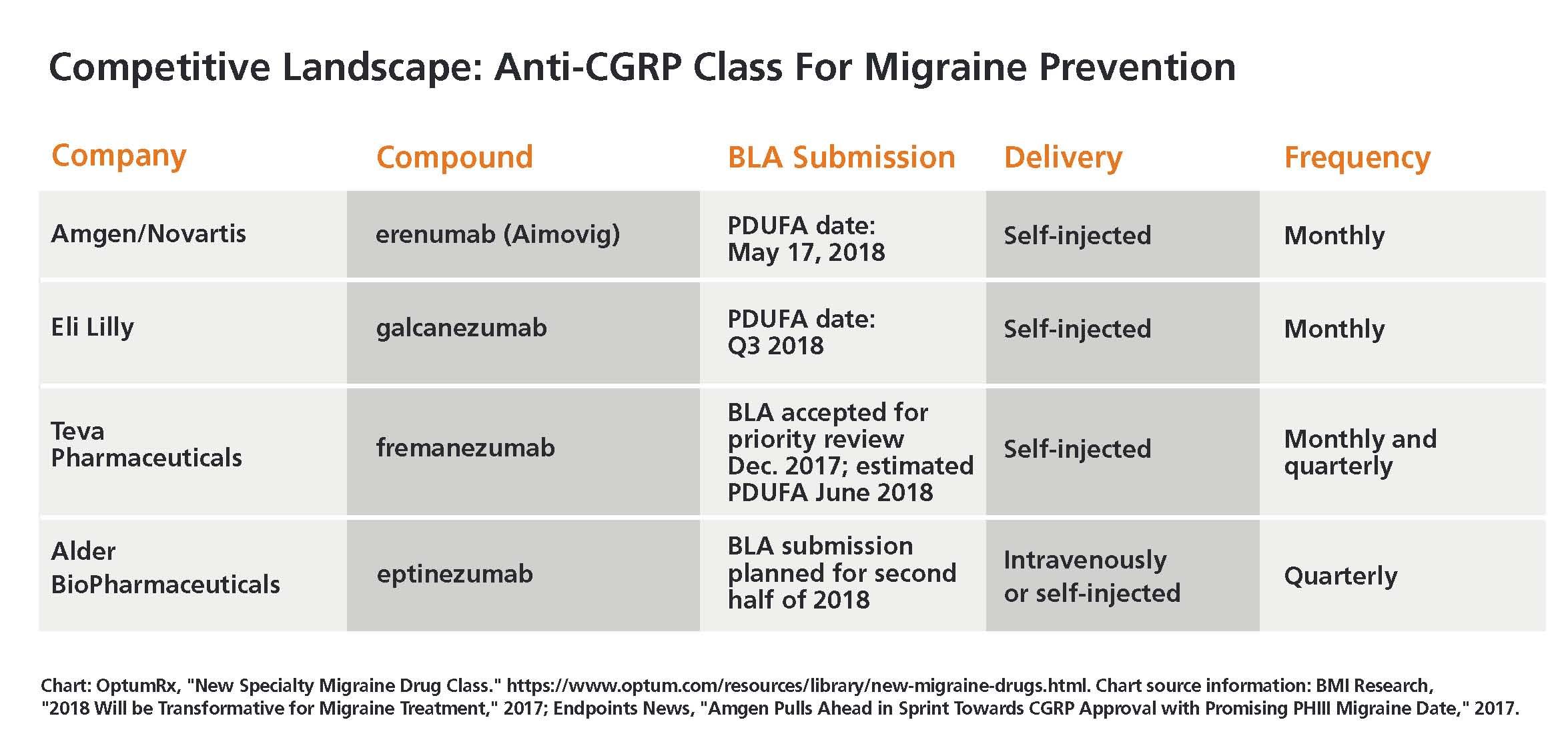Migraine Pipeline and Impact Updates: What Health Execs Should Know
A new report highlights physical, social, and economic challenges of migraine.
It is important for healthcare executives to recognize the impact migraines have on people at home and in the workplace, as there is a serious need for additional treatment options, according to a new report.
The 2018 Migraine Impact Report evaluates the physical, social, and economic challenges of migraine. The Lilly-sponsored quantitative opinion survey included responses from 1,018 U.S. adults, including 518 people who have been diagnosed with migraine by a healthcare provider, 200 people who know someone with migraine, and 300 community members who do not know someone with migraine.

Aurora
Among those surveyed, people diagnosed with migraine experienced on average 15.4 completely pain-free days over the previous 30 days. They also noted that the symptoms of their migraine prevented them from doing what they wanted to do for one week (6.9 days) over the previous 30 days.
“More than 36 million Americans battle migraine, many of whom lack a treatment option that addresses their symptoms and allows them to function in their day-to-day lives or is tolerable for them,” says Sheena Aurora, MD, medical fellow at Eli Lilly and Company.
Notably, the survey found:
- People who do not have migraine often underestimate the pain and average duration of migraine. On a scale of one to 10, those surveyed who did not know someone with migraine underestimated the pain of a typical migraine (an average score of 6.2 compared to an average score of 7.1 given by people diagnosed with migraine).
- Migraine frequently adds stress and may result in less time with family. Nearly three out of four parents surveyed who were diagnosed with migraine (72%) agreed migraine affects their ability to take care of their family.
- Migraine may impact a person's career potential. Among employed respondents diagnosed with migraine, seven out of 10 (68%) agreed they have been less productive at work due to migraine.
- Most respondents diagnosed with migraine (81%) agreed they wish they could do more to manage their disease.
Some additional findings from the survey include:
- Those diagnosed with migraine experienced on average only 15.4 completely pain-free days over the previous 30 days. Respondents also noted their migraine prevented them from doing what they wanted to do for one week (6.9 days) over the previous 30 days.
- The worst migraine pain ranked higher than that of childbirth among those surveyed who had experienced both (n=244, an average score of 8.6 compared to 7.3, on a scale of one to 10).
- Respondents diagnosed with migraine on average rated the worst migraine pain similarly to that of the "most painful thing I have ever experienced" (8.6 compared to 8.7), and higher than both the pain associated with kidney stones and broken bones (8.3 and 7.0, respectively).
- Nearly all respondents diagnosed with migraine (91%) agreed those who do not suffer from migraine do not understand the severity of the disease.
- Respondents diagnosed with migraine missed an average of 7.4 important events in the previous year due to migraine, such as birthdays, graduations or holiday gatherings.
- Nearly two-thirds of those surveyed (62%) say they try to hide the true impact of migraine from those at work or at schooll.
- More than half of those diagnosed with migraine (54%) agreed no matter how hard they try, they don't feel they can manage migraine.
As a practicing neurologist, Aurora encourages others across the industry to prioritize and recognize the impact of migraine and the importance of new treatment options for this devastating disease.
“Despite its prevalence, migraine is often underestimated or dismissed as ‘simply a headache,’” Aurora says. “Migraine is a neurologic disease that can seriously affect a person’s life, and there are many people living with migraine who are unable to work and take care of their families. In fact, millions of people with migraine are losing at least one month per year to the disease-something I saw firsthand with many patients.”
Over the last two decades, innovation in the migraine treatment space has been limited-“but with new preventive therapies on the horizon, we believe that these new options may substantially improve care for those living with this disease,” says Aurora.
Next: Pipeline migraine drugs
Pipeline migraine drugs
Currently, the drug development pipeline is rich with products nearing market availability for both the prevention and treatment of migraine. The most prominent focus of this pipeline activity is a new and very promising category of drug products known as CGRP (calcitonin gene-related peptide) antagonists. Researchers have determined that CGRP levels are highly elevated in migraine sufferers, and medications that can bind to and inhibit the activity of CGRP may yield significant value in helping to better manage migraine and cluster headache.
There are currently four CGRP antagonists in late-stage development. Recent late-stage clinical trials with these drugs demonstrate significant reductions in monthly migraine or headache days compared to placebo, and with minimal side effects, according to a study published in Current Treatments in Neurology.

Other abortive treatment pipeline drugs include:
- Lasmiditan, an investigational, first-in-class molecule for the acute treatment of migraine. It is the only oral drug in development of its kind that selectively targets 5-HT1F receptors, including those expressed in the trigeminal pathway, and has been designed for the acute treatment of migraine without the vasoconstrictor activity associated with some migraine therapies. If approved, lasmiditan could represent the first significant innovation for the acute treatment of migraine in more than 20 years.
In December 2017, Lilly announced positive results from the second of two phase 3 studies evaluating lasmiditan for the acute treatment of migraine. Lilly plan to submit a New Drug Application (NDA) for lasmiditan to the FDA in the second half of 2018.
- Ubrogepant, a novel, highly potent, orally-administered CGRP antagonist from Allegan is being evaluated for the acute treatment of migraine. Ubrogepant met its main goals in the first of two phase 3 studies. In a trial of 1,327 adults with migraines, ACHIEVE-1, the drug bested a placebo at reducing the pain or symptoms from a single “moderate to severe” attack. Results of the second phase 3 trial, ACHIEVE II, are expected in coming months. Allergan anticipates filing of a New Drug Application (NDA) to the FDA in 2019.
To be determined
While all of these agents offer the neurology community and migraine sufferers renewed hope for additional treatment alternatives, such hope must be balanced with questions that will remain largely unanswered at product introduction:
- Long-term data with use of these agents is largely limited at this point, and as such, whether these products provide long-term reliable durability of effect, safety and tolerability remains to be determined, according to the Current Treatments in Neurology study.
- While safety and tolerability of these products in clinical trials thus far appears good, it must be recognized that CGRP has many complex functions in the nervous and vascular systems. CGRP receptors are also found in the adrenal glands, kidneys, pancreas, and bone. There is at least a theoretical risk that blocking CGRP could hinder any beneficial physiologic functions CGRP activity may provide. And, since the activities of these drugs have been shown to be prolonged in the body, any undesirable effects may not be quickly and easily reversed, according to the Current Treatments in Neurology study.
- Pricing of these products will not be determined until product launch, however analysts estimate pricing for preventive CGRP antagonists could range from about $8,500 to $20,000 per year, according to The Verge. Without direct comparative data demonstrating enhanced safety and efficacy versus current standards of migraine care (both preventative and abortive), cost effectiveness with these therapies will remain to be determined.
David Calabrese of OptumRx Talks New Role, Market Insulin Prices and Other Topics 'On His Mind'
April 13th 2023In this month’s episode of the "What's On Your Mind podcast," Peter Wehrwein, managing editor of MHE connects with the now Chief Clinical Officer of OptumRx Integrated Pharmacies, David Calabrese. In this conversation, David touches on his transition in January as OptumRx’s former chief pharmacy officer and market president of health plans and PBMs to his new role as Chief Clinical Officer where he now focuses more on things such as specialty pharmacy to home delivery — with an overall goal of creating whole-patient care. Throughout the conversation, Calabrese also touched on the market’s hot topic of insulin prices and behavioral health services within the OptumRx community, among other topics.
Listen
Briana Contreras, editor of Managed Healthcare Executive, spoke with Nancy Lurker, CEO and president of EyePoint Pharmaceuticals. Nancy shared a bit about EyePoint and how the organization’s innovative therapies are addressing patient needs through eye care, and most importantly, she addressed C-Suite positions like the CEO role. Nancy shared advice for those seeking to reach the CEO level, especially toward women in healthcare and other roles, and what it takes to run a biopharma company.
Listen
Upended: Can PBM Transparency Succeed?
March 6th 2024Simmering tensions in the pharmacy benefit management (PBM) industry have turned into fault lines. The PBMs challenging the "big three" have formed a trade association. Purchaser coalitions want change. The head of the industry's trade group says inherent marketplace friction has spilled over into political friction.
Read More
Florida Gets the OK. But Will Drug Importation from Canada Actually Happen?
March 5th 2024Canadian health officials warn that maintaining a drug supply for Canadians is their priority. The staunch opposition of the U.S. pharmaceutical industry may also be an obstacle to imports from north of the border.
Read More